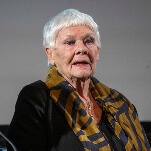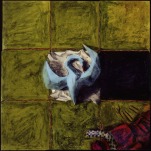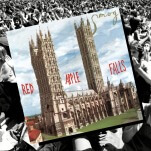During Jean-Luc Godard’s initial burst of cinematic creativity, the stalwart of the French New Wave dabbled in different genres, testing the boundaries of what could be done within the context of a narrative film. By the mid-’60s, Godard had settled into a steady routine, pumping out roughly two feature-length movies (plus several shorts) a year, all of which combined political commentary, pop art, and postmodernism in ways that came to be defined as “Godardian.” As a result, there’s a certain amount of interchangeability to the Godard films released between 1964 and 1967. Consider the “plots” of three features recently released to DVD: In 1964’s Une Femme Mariée, bored housewife Macha Méril is torn between the demands of her son, her husband, her lover, and her consumer desires. In 1966’s Made In U.S.A. (very loosely based on one of Donald Westlake’s “Parker” novels, written as Richard Stark) Anna Karina plays a private investigator searching for meaning in the faces she punches. And in 1967’s 2 Or 3 Things I Know About Her, Marina Vlady plays a suburbanite who turns tricks in a flat-looking modern apartment complex in order to pay her ever-mounting bills. Made In U.S.A. stands out in terms of its tone and milieu, but all three of these films are similarly satirical and freeform, dissecting how romance, shopping, and popular culture rely on varying forms of seduction and exploitation.
As with the other Godards of this era—Masculin Féminin, La Chinoise, and Week-end in particular—these three are more about bravura moments than internal consistency. Une Femme Mariée is arguably Godard’s most sensual work, with its Beethoven soundtrack, whispery narration, and flashes of bare skin. But it’s also playful, noteworthy for its use of newspaper headlines and ad copy to comment on the action, as well as for its naturalistic conversations between women striving to improve their sexual desirability for their abusive lovers, and for one stunning sequence where Godard shows bathing beauties splashing around in solarized footage that gives their sexiness a sinister cast. Made In U.S.A. is overtly cartoony, putting its characters—all named after pulp novelists, movie directors, and politicians—in front of stark white backgrounds that resemble the panels of a comic strip, and having them wreak over-the-top violence on each other between songs, poetic recitations, and movie references. It’s dense with allusions, and perhaps the purest expression of Godard’s myriad cultural preoccupations. 2 Or 3 Things I Know About Her keeps interrupting its skimpy narrative so Godard himself can whisper confessions about his love/hate relationship with modern architecture and design, all while letting his camera linger over the elegant curves of commercial logos or the swirls of coffee in a freshly stirred cup. In addition to being a little samey, the mid-’60s Godards are so steeped in the particulars of their time that they often feel like 40-year-old news. But there remains an undeniable, under-recognized human element to this work, as Godard’s characters read to each other, talk earnestly about the issues of the day, and persist through their creator’s time-bending, frame-bending whims.
Key features: Nothing on Une Femme Mariée, but the two Criterions are loaded with extras, including interviews, essays, and critical commentaries that all explore the making and meanings of this matched set of films.








































